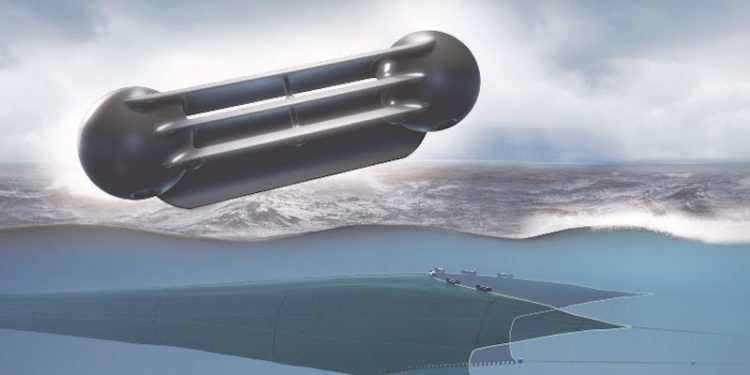Vónin’s Flyer is designed to utilise a trawler’s towing speed to provide lift, replacing at least some of the floats on a trawl’s headline.
The concept is nothing new and headline kites have been in existence for many years, although they are known to often be temperamental and not easy to rig correctly. So Vónin has taken this existing concept and re-thought it from scratch, coming up with a self-righting lift device that can be rigged to a trawl’s headline.
Incorporating a float at each end of the Flyer gives it its own buoyancy, enabling it to right itself to the optimal orientation as the trawl is towed, and the lift generated it proportional to the towing speed.
‘A standard Bacalao 630 trawl of the type that the Faroese pair teams use is normally rigged with 150 eight-inch floats, and the theory is that towing at 3.5 knots we can replicate the same lift with just six Flyers,’ Bogi Nón said, adding that there are also possibilities for the Flyer with pelagic trawls and shrimp gear.
It hasn’t been an entirely painless development process, as the prototype with 11 inch floats proved to be too powerful, hence the design being re-thought with eight inch floats. Selecting the right materials has also not been easy, balancing the right combination of strength, rigidity and flexibility to cope with the rough handling it inevitably gets on a trawler’s deck.
The Flyer comes as a moulded unit with two attachment points for it to be fixed to a trawl’s headline.
‘We have already done trials with eleven and eight inch Flyers, and now we’re in the process of a final set of trials on pair team Rógur and Lerkur. They tow two trawls together, so we get some very precise results in comparing a standard trawl with one rigged with Flyers.’
He commented that the Flyer is unlikely to completely replace floats, in spite of the exceptional lift it can generate.
‘We expect that we’ll need to keep some floats on the wing tips to help the gear square away when it’s shot and also to maintain some flotation for the headline if the trawl is caught on a fastener, although the Flyer also has its integral buoyancy.’
‘There’s also an environmental angle to this, as trawl floats are frequently broken or lost and plastic pollution in the ocean is an increasingly serious concern. So the Flyer reduces the amount of plastic in the water as there are fewer of them compared to a headline lined with conventional trawl floats.’









